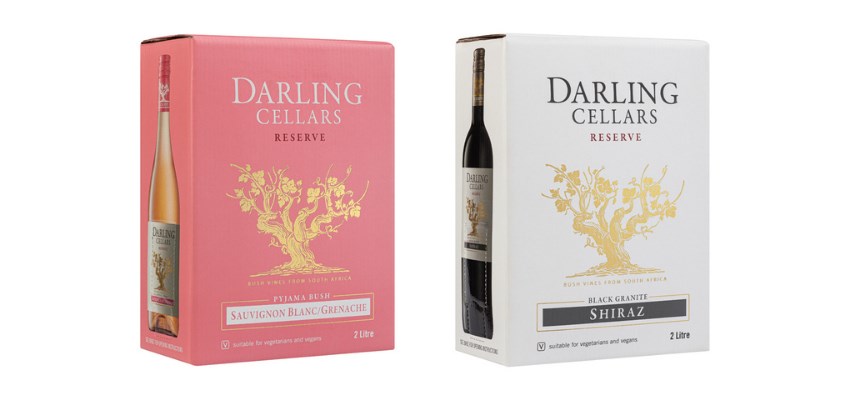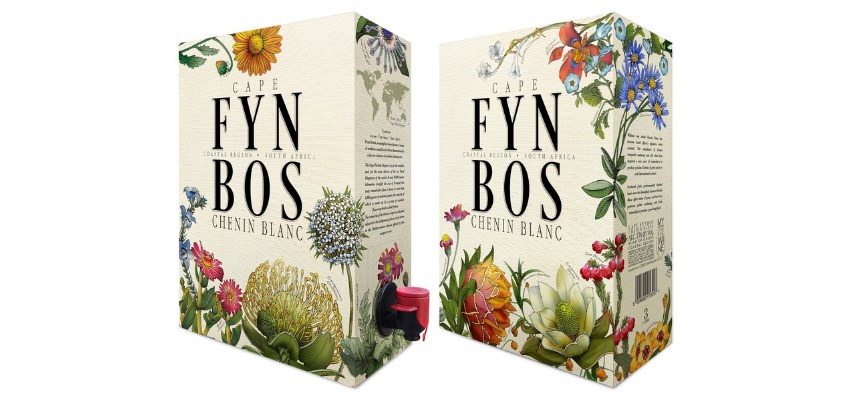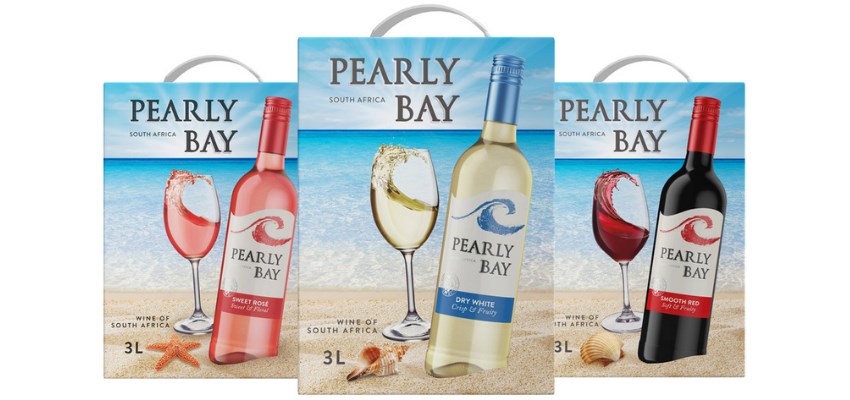Wine trends made the national headlines when bag-in-box sales (known as BiB in the trade) overtook bottled wine sales by volume in South Africa for the first time in 2020. The surge in new premium boxed wine brands by leading producers on the supermarket shelf underlined the growing demand for BiB wines – a fascinating trend in a domestic market traditionally led by bottled wines.
Many commentators cited the Covid-19 pandemic as a major factor in accelerating the trend to boxed wine. Unprecedented on-off bans on alcohol sales sparked panic buying by price-conscious wine consumers who stockpiled boxed wines, discovered the good-value of boxed wine during an economic downturn, and convenience for home consumption when lockdown restricted on-trade sales. But the trend to BiB sales was there all along – doubling in volume from 22% of domestic wine sales way back in 2005 to 44% in 2020, while bottled wine sales stagnated at around 43% (Sawis).
The BiB market in South Africa reveals a fascinating segmentation into three categories at very different price-points. Although the small new premium boxed wine brands – the two-litre boxes of varietal, vintage wines by leading Cape producers pioneered by Woolworths during the pandemic – have tended to steal the media limelight, the premium share of all BiB wines is less than 2%. In fact, the BiB category in SA is dominated by the entry-level five-litre boxes (70%) made up of big white and red blends, and the mid-price point three-litre boxes (28%) which tend to be varietal-based.
Over the last two years, Woolworths has introduced premium two-litre boxes of vintage wine which showcase the signature varieties of leading Cape cellars. Selling at the top-end of the BiB category from R125-R199, the expanding range includes best-selling De Wetshof Limestone Hill Chardonnay, Kleine Zalze Chenin Blanc, Diemersdal Sauvignon Blanc, Beyerskloof Pinotage, Pierre Jourdan Tranquille Blush, Beyerskloof Pinotage, La Motte Merlot, and Ken Forrester SMG blend – in addition to Stellar Organic White and Woolworths own brand Sauv. These well-known brands fly off the shelf.
In an interview in WineLand (May 2021), Rob Gower, senior wine buyer for Woolworths, comments: “We will only put a strong bottle brand into BiB format where we can maintain exclusivity. We chose good performers with trusted suppliers. We’re not interested in launching new brands in BiB format unless they have robust bottle demand. The aim of the range is to keep customers drinking branded wine while they’re struggling to afford it, not to drag consumer spend down.”
The big BiB trend seems unstoppable in South Africa. More and more premium producers and retailers have launched two-litre boxed versions of established bottle brands over the last two years, with new releases by KWV Classic Collection, Chateau Libertas, Fleur du Cap, Zonnebloem, Darling Cellars, Fat Bastard, Land’s End, Leopard’s Leap, and others. In a fast-evolving differentiated BiB market, retailers such as Checkers (Leopard’s Leap, Cape Fynbos) and Pick 'n Pay (Darling Cellars, Fat Bastard) have released premium three and two-litre boxes – and discounted prices to loyalty card buyers. The name of the game is upping the quality of BiB wine and offering great value for money.

Darling Cellars 2 litre bag-in-box wines.
The drastically improved quality of boxed wine may help to overcome consumer resistance in a traditionally conservative South African market. Sweden, by comparison, has taken to premium boxed wine from the beginning since the mid-1990s – with a 52% BiB share of wine sales by volume (83% of South African wine is sold in BiB format here). The far lower carbon footprint of BiB wines – estimated at 85% less than bottled wine in terms of packaging, transport, recycling, and landfill – also plays a significant role in environmentally-conscious Scandinavia. Older SA consumers were slow to switch from cork to screw-cap, or to explore newer alternate varieties or brands out on the shelf – but reduced discretionary spend on luxury items may overcome reluctance to drink BiB wines.
Most boxed wines contain the same quality content as their bottled counterparts. Leading producers of bottled and boxed Sauvignon Blanc, Chardonnay and Chenin Blanc such as Du Toitskloof, Robertson Winery, and Van Loveren (with their excellent value-for-money Tangled Tree Butterscotch Chardonnay and Tropical Sauvignon Blanc) are well-known for these signature, best-selling varieties whatever the packaging. Many wines now available in boxed format are awarded ratings of three to four stars in Platter’s annual Wine Guide – premium brands like Land’s End Sauvignon Blanc (4 stars), Leopard’s Leap Chenin Blanc (3,5 stars) and Beyerskloof Pinotage (3,5).
Sceptics wedded to the corkscrew and the bottle might like to sample one of the best boxed wines I’ve tasted, all in the line of duty, a line-up of thirty boxed wines over the last twelve months. (I know it’s a tough job but somebody has to do it.) My top box is Cape Fynbos Chenin Blanc (R120 for a three-litre box from Checkers, rated 3,5 stars by Platter’s). A great advert for Chenin Blanc, South Africa’s signature white variety, sourced mostly from dryland old bush vines in the Swartland and Paardeberg, this little beauty comes from The Grape Grinder, an innovative vintner in Paarl.

Cape Fynbos Chenin Blanc bag-in-box wine by The Grape Grinder.
Originally made for export to Europe, it expresses the typical stone fruit, guava and kiwi qualities of Chenin Blanc with lees contact adding texture, balance and scintillating minerality. Delightfully packaged in a box with bright botanical sketches by the winemaker’s wife – identified by the proper Latin names of fynbos – this Checkers brand is my pick of the bunch. And it won an IWSC bronze in 2020, a Michelangelo 2021 award for innovative packaging, and a gold medal at the International Challenge in 2021. So here’s a wine box with award stickers aplenty to impress friends and family!
Rolling out KWV’s new premium Pearly Bay range of boxed wines (Dry White and Smooth Red at R129) in April 2022, Vanessé Smal, Brand Manager, comments, “Boxed wine is a booming category, especially in 3L packs as wine lovers become more aware of their benefits in terms of the environment, value for money and convenience. The overall growth of more than 10% in the local boxed wine market, coupled with the growth in volume and value of more than 46% of our Pearly Bay wines, bodes well for our new BIB offering to create an even greater consumer demand.”

Pearly Bay, KWV's new premium range of boxed wines.
“BIB wines are trending at all price points with the 3L format leading the charge locally at an annual growth rate of 18%. By far the most effective for reducing a wine’s carbon footprint, the lighter and more compact 3L BIBs offer a more sustainable packaging solution. Another major consumer benefit is the ability to preserve the wine by avoiding exposure to oxygen long after it has been opened. Exceptional value, easy storage and break proof make BIBs particularly popular for the outdoors.”
Boxed wine sales may be one way of recruiting a new generation of wine consumers – while offering consumers greater bang for their buck. The Australian example, where boxed wines were invented over fifty years ago by an innovative winemaker, has significant lessons for South Africa. Hats off to Tom Angove of Angove in the Riverland in South Australia. The revolution in wine packaging down under recruited a traditional beer-drinking country to wine – a land with a sunny lifestyle which took to the convenience of boxed wine around the barbie, on the beach, and in the great outdoors.
There’s nothing new under the sun. It turns out that Tom Angove’s cask was inspired by wine bladders used by Greek shepherds in antiquity. Traditionally made of goatskins, rural Spanish farmers still use these botas de vinho today – all the bag in box needed was an airless flow tap patented in Australia in 1965 to prevent oxidisation in the early casks which came with a peg.
On a pre-Covid visit to Adelaide in 2018, I spotted the emergence of cask (boxed) wines on a giant timeline depicting the evolution of the Australian wine industry over two centuries, from the planting of the first vines to today. After a massive surge in BiB sales in the 1970s and a premium varietal/vintage boxed surge in the 1980s, a new generation of younger wine drinkers in Australia had evolved into fine wine consumers of bottled wines by the 2000s, as the BiB share decreased to 25%. If South Africa follows the same trend, the humble papsak will have played a moerse role. And environmental trends towards sustainable packaging may keep boxed wines at the forefront.